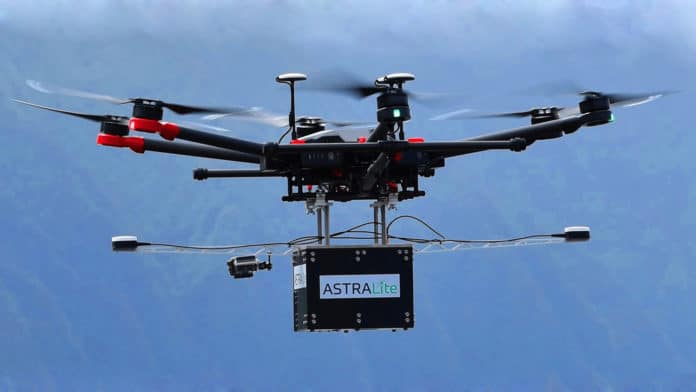The American company ASTRALiTe has produced the first of its kind compact LiDAR that can detect small underwater objects, measure shallow water depth, and survey critical underwater infrastructure from a small UAV platform.
It provides high-definition measurements both above and below the water surface and accurately measures the transition from land to water.
The developers paid special attention to the weight of the device so that it can be mounted on a variety of medium-sized drones. And the result – this patented topographic and bathymetric scanning LiDAR called “edge” weighs about 5 kg.
It can easily fit in a box with dimensions of 26.7cm x 22.9cm x 18.3cm and is capable of both the topographic and bathymetric scanning, including coastal mapping and surveying, infrastructure inspection, and military logistics. Data from bathymetric studies are used for the navigation needs of ships and submarines.
The edge is also completely self-contained, all thanks to its own INS (Inertial Navigation System)/GNSS, battery, and the on-board computer. Due to its lightweight, the LiDAR is ideal for deployment on UAV systems for faster, safer, and more accurate bathymetric surveys.
According to the developers, the LiDAR has a centimeter-level depth resolution, and the maximum depth to which the device can “see” is 5 meters.
The LiDAR’s centimeter precision is provided by two methods. The first one is Real-Time Kinematic (RTK), a set of techniques for obtaining the coordinates and heights of points using a satellite navigation system. It adjusts the accuracy of the survey, receiving corrections from the base stations in real-time.
The second – the PPK software – uses the same corrections, but re-computes all inertial data and corrects all the trajectories, which significantly improves the overall accuracy. The software provides access to more than 7000 ground stations located in 164 countries of the world.
ASTRALiTe used the dual antenna Ellipse2-D inertial navigation system, developed by SBG Systems, which combines both of these methods.
